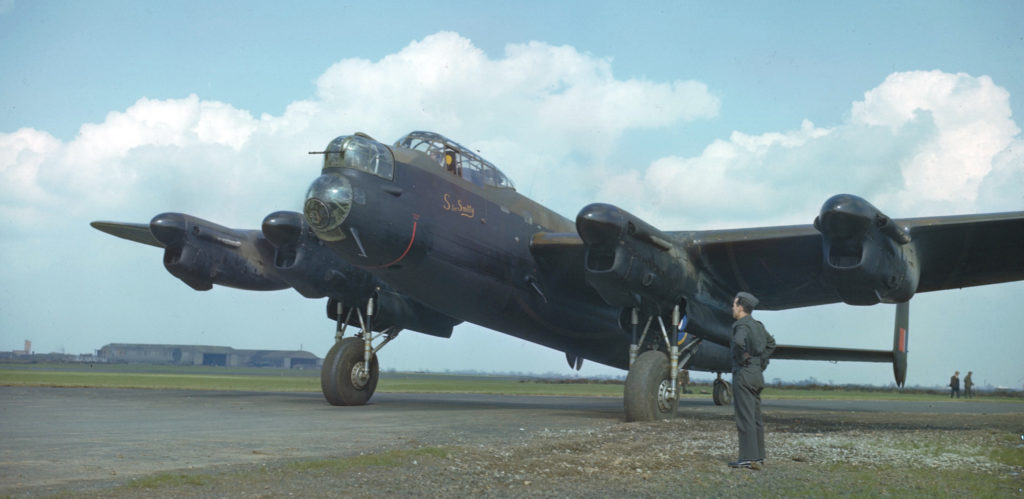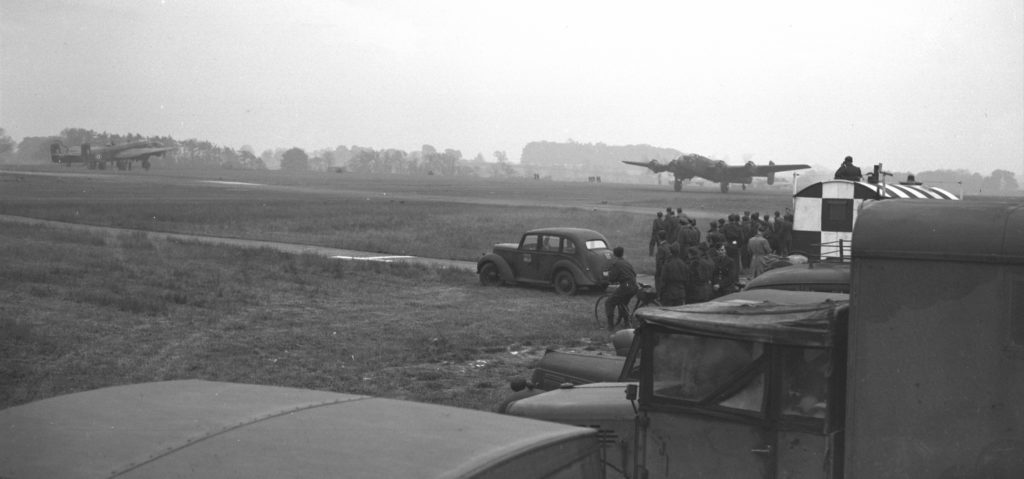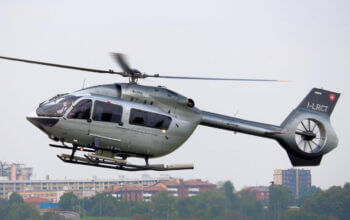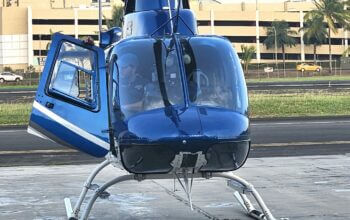Estimated reading time 9 minutes, 13 seconds.
Bomber Command was placed under the control of the United States’ General Dwight D. Eisenhower on April 14, 1944. Until this date it had been pursuing a strategic campaign against Germany itself, directed by Air Chief Marshal Arthur Harris from his headquarters at High Wycombe.

Unacceptable loses early in the war had resulted in the Royal Air Force (RAF) opting for a policy of night-bombing to increase the bombers’ chances against German fighters. Due to the difficulties associated with identifying precise targets at night, Bomber Command concentrated on area, as opposed to precision bombing, when striking German targets. The very nature of this type of bombing cast doubts as to its suitability in support of D-Day, but Eisenhower felt he needed the extra “punch” that the more than 1,400 bombers, primarily Lancasters and Halifaxes, could deliver.
In early March 1944, a “transportation plan” was adopted, which called for heavy strikes against rail communications in France in preparation for the invasion. On March 6-7, 1944, a series of test attacks were launched against six major marshalling yards. The success of these missions indicated that the techniques developed for night bombing allowed the squadrons to make, as noted by Harris, “astonishingly accurate” attacks.
Soon, Bomber Command found its scope of operations expanded to include strikes on coastal defences and supply depots. With grim determination, Bomber Command’s 83 squadrons operated from their airfields in eastern England, flying over enemy territory night after night. Fourteen of these squadrons were Canadian with all but one (405 Squadron) belonging to No. 6 (RCAF) Group.
They found themselves in the thick of it right from the beginning.
For the men of Bomber Command, D-Day encompassed two sorties: the first on the night of June 5-6 and the second the following night. The night before the invasion found the Canadian squadrons out in force as Bomber Command put on a maximum effort. Lancaster bombers from 408 and 419 Squadrons departed in the dark from their fields at Linton-on-Ouse and Middleton St. George. They were soon joined by Halifax aircraft from 420 and 434 Squadrons at Tholthorpe; 424 and 433 at Skipton-on-Swale; 427 and 429 at Leeming; and 425, 426, 428, 431 and 432 from Dishforth, Linton-on-Ouse, Middleton St. George, Croft and East Moor respectively. The RCAF’s only Pathfinder unit, 405 Squadron, had already departed en route to making the evening’s targets in Normandy.
The RCAF aircraft were part of a total force of just over 1,000 aircraft that Bomber Command dispatched to attack coastal batteries at Fontenay, Houlgate, La Pernelle, Longues, Maisy, Merville, Mont Fleury, Ponte-du-Hoc, Quisterham and St. Martin-de-Varreville.

The Germans were caught totally by surprise and there was an almost complete absence of German night-fighters to plague the 551 Lancasters, 412 Halifaxes and 49 Mosquitos that appeared over their targets. However, the weather was another matter and only two of the targets were free of cloud. This meant that most of the aircraft dropped their bombs on a navigation fix. The German gunners that evening did not realize it, but they had been the recipients of a record breaking event as approximately 4,500 metric tonnes of bombs were dropped on them–the greatest tonnage in a single night to that point in the war. This record would be subsequently broken.
Although not all of the guns were destroyed, the overall mission was judged as successful with only three aircraft lost. One of them was an aircraft belonging to 426 Squadron. Halifax LW 382, piloted by Flying Officer Joseph Francis Terence Beesley, 21, from Smithers, B.C., had successfully completed the sortie when it exploded in mid-air near Norfolk, England. Also killed, along with the RAF flight engineer, were navigator Roy Hudson Tranter, 31, from Peterborough, Ont.; bomb-aimer Richard Reginal Irvine, 32, originally from Dublin, Ireland; and Pilot Officers Roy Frank Carol, 20 from Winnipeg, Man., and Graham William Durin, 20, hailing from Vancouver, B.C.
Back on the ground, the Canadian aircrew were greeted with the news that the invasion was on!
Initial euphoria quickly turned to a realization that the squadrons could be called upon for additional missions at any time. One squadron War Diary reported that all of its 15 aircraft had returned from the attack on the coastal batteries between 5 a.m. and 6 a.m., but within three hours, these same aircraft were ready to go out again. Fortunately, the tired aircrew would wait until much later in the day before venturing once more over occupied France.
The targets for the night of June 6-7, 1944 were rail and road centres behind the Normandy battle area. That evening, 1,065 aircraft–589 Lancasters, 418 Halifaxes and 58 Mosquitos–took to the air. All of the targets that night were located near, or in, French towns and there were numerous civilian casualties. The RCAF squadrons were directed toward the Norman towns of Condé-sur-Noireau and Coutances. German opposition was light, but the weather was poor. Allied bombers dropped almost 4,000 tonnes of bombs on the various targets. Eleven aircraft were lost, none of them belonging to the RCAF.

Given the number of Canadians serving in non-RCAF squadrons, additional casualties were inevitable in support of D-Day.
During a night operation over Langres, France, on June 5-6, Lancaster ND 921 from 582 Squadron was lost along with its seven-man crew, including Flying Officer Arthur Hugh Grange, the 27-year-old bomb aimer from Picton, Ont. On his third mission over enemy territory on D-Day, 29-year-old Flight Sergeant Morris Campbell Murray, from Toronto, was one of seven airmen killed when their 76 Squadron Halifax was hit by flak during an attack on coastal batteries near Mont Fleury, France. Flying Officer William Robert McCutcheon, 29, from Summerland, B.C., was killed with his six crew-mates from 97 Squadron when their Lancaster was shot down during an attack near Cherbourg, France. Another 97 Squadron aircraft was lost that evening when Lancaster ND 739 was shot down by a JU88 night-fighter. Among the dead was 21-year-old Flight Lieutenant Herbert William Rieger, from Hamilton, Ont.
Bomber Command remained at Eisenhower’s disposal until September when it returned, in full, to its campaign against Germany. In the period leading up to D-Day, 24,600 sorties were flown and approximately 79,000 tonnes of bombs dropped to support the landings and subsequent fighting.
Eisenhower had no doubts about the value of their contribution to the success of the land battle. Although casualties on D-Day had been light, they began to climb as the Luftwaffe recovered from the initial onslaught. The invasion of Normandy might have marked the beginning of the end, but for the Canadians in Bomber Command, the end was still a long way off.









Good afternoon – I came across this article while searching history of D-Day events.
My uncle – Flying Officer Joseph Francis Terence (Terry) Beesley is mentioned in your article.
He was the pilot of the 426 Squadron that left on a mission at 1:59am from Houlgate in France from airfield station in or near Linton on Ouse. He flew a Handley Page Halifax (type III, with serial LW382. I found your article most imformative.
Thank you.
Kathleen Bennett (Beesley)
My uncle Roy Frank Carol was aboard that downed aircraft as well. Fortune try I still have the photos of his military funeral at Brookswood.
My Great Uncle Roy Hudson Tranter (my Grandmother’s youngest brother) was also part of this crew. Thank you for This well written account of their service. Does anyone know if there is an existing photo of the crew together? Heather Hamilton-Irvine Ottawa, Canada